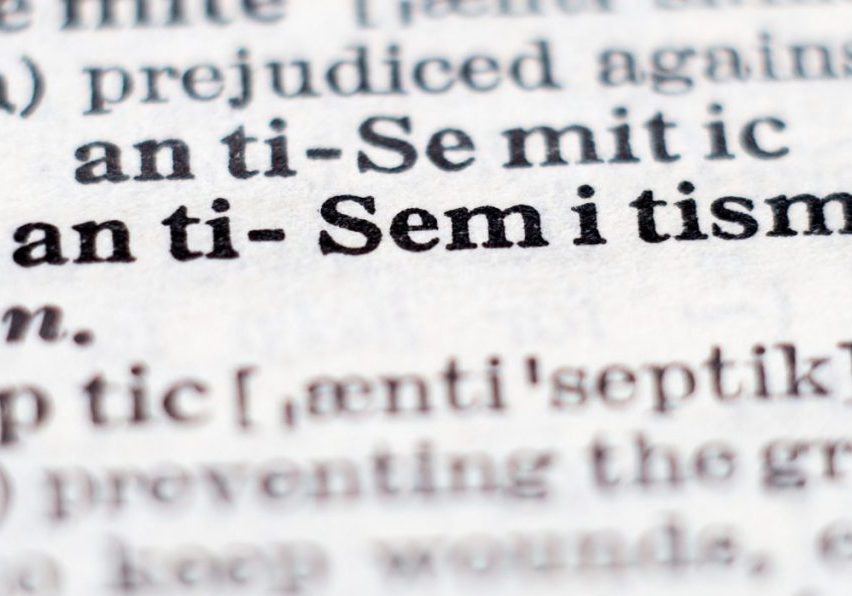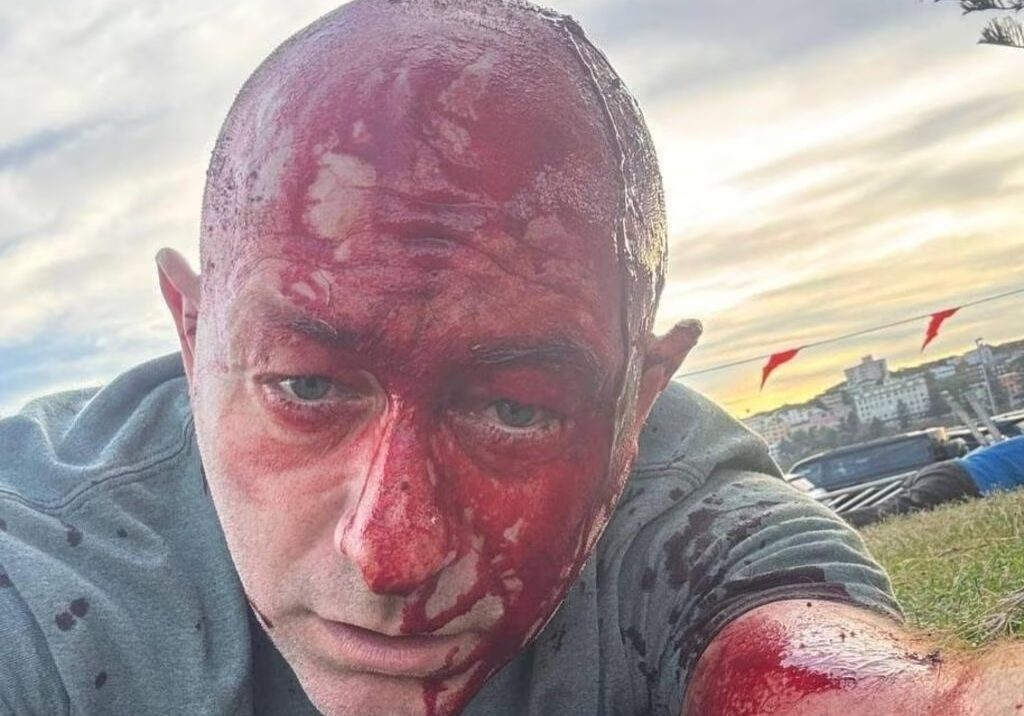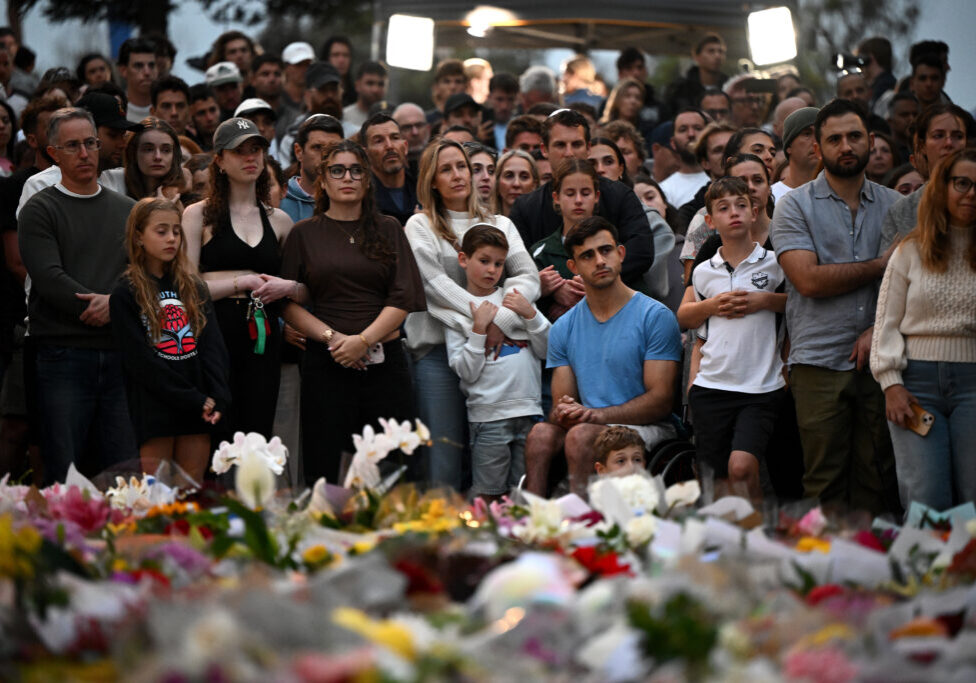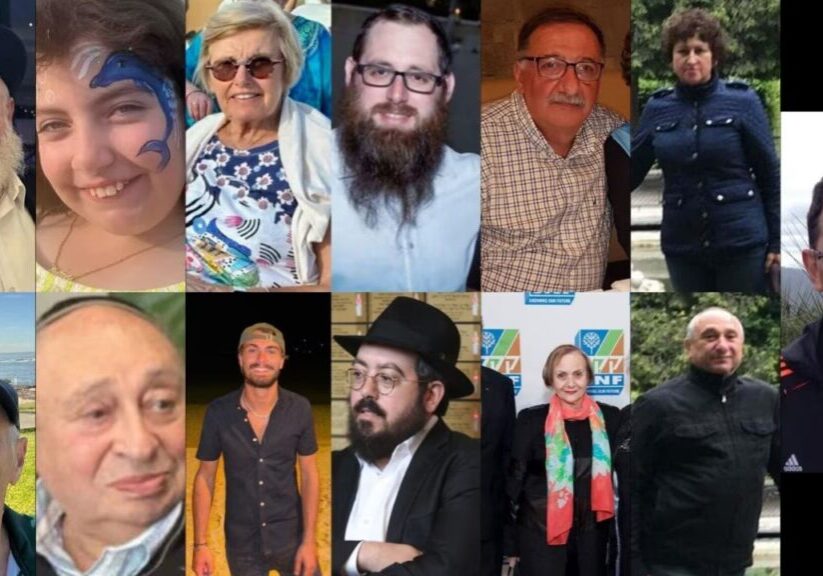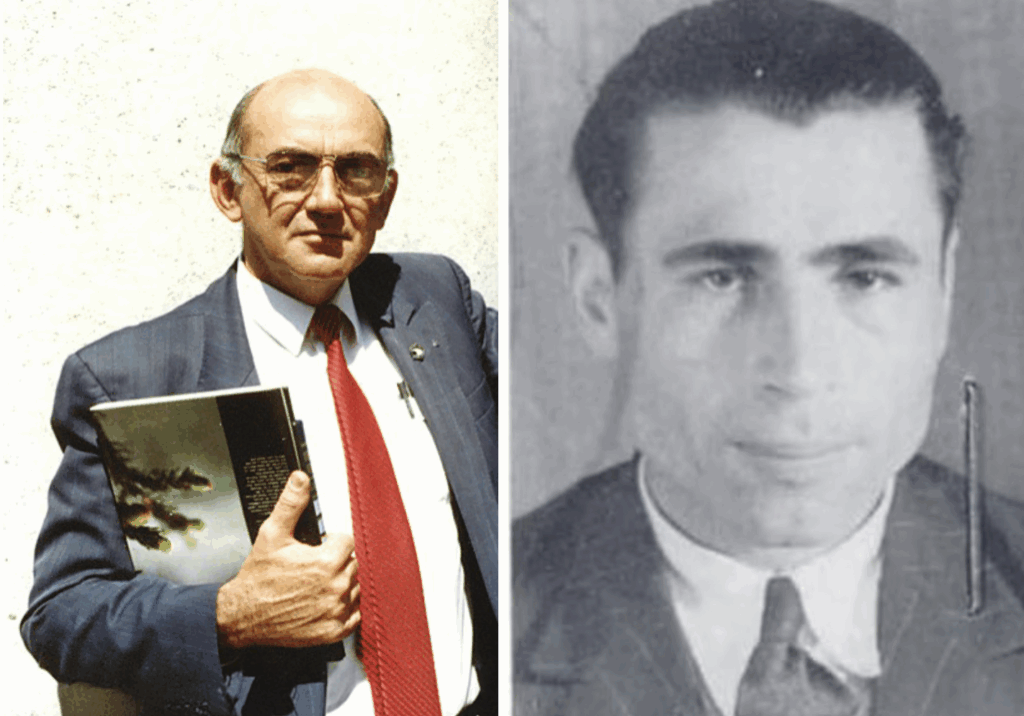Australia/Israel Review
The “A” Team of Terror revisited
Sep 1, 2006 | External author
Long before there was al-Qaeda, there was Hezbollah. As the former director of the CIA, George Tenet warned on February 12, 2003, “Hezbollah, as an organisation with capability and worldwide presence, is [al-Qaeda’s] equal, if not a far more capable organisation.” US Deputy Secretary of State Richard Armitage labeled Hezbollah the “A-team” of terrorism, relegating al-Qaeda to second string status.
So why was the international community ‘caught by surprise’ when Hezbollah started the month-long war that resulted in over 1000 deaths? The answer is complex. Yet from the public discourse perspective, several examples elucidate why the Hezbollah beast had gone untamed and mostly unchallenged since it was created in 1982 by the Iranian Revolutionary Guard in the Ba’albek area.
First, the terrorist group’s smart and steady campaign of misinformation. To cite their results in Australia, on the July 21, 2006 “Jon Faine” ABC Radio show, a young Australian-Lebanese woman claimed that Hezbollah is nothing but “a group of young, dysfunctional, overzealous, pimple-faced youth with a few sophisticated fireworks”.
A second problem is the media’s attention deficit disorder. Newspapers and electronic news shows must cope with too many events, making it improbable for any story to remain ‘fit to print’ for years on end, even if it is about terrorism.
There is also the issue that it is fairly hard to collect human intelligence on Hezbollah’s structure and operations. Its informal yet highly successful vetting mechanisms for new recruits make the group virtually impenetrable to intelligence agents. And down the line, this places roadblocks in the availability of public information on the group.
But, regardless of the cause, in the realm of public discourse, there is an alarming lack of knowledge of Hezbollah’s current destructive ideology, reach and deadly effects. Both Lebanon and Israel had to pay a regrettably high price in order for the world to take the first steps in solving the Hezbollah problem – acknowledging Iran and Syria’s involvement, learning about the terrorists’ arsenal of weapons and their determination to destroy Israel.
However, many of the examples often cited as evidence of Hezbollah’s international role appear outdated. The bombings of the Jewish cultural centre and the Israeli Embassy in Argentina during the early 1990s are often cited, with their combined death tolls of 114. There are also some mentions of a July 19, 1994 bombing of a Panamanian airplane that killed 21 passengers, 12 of them Jewish. Other historical examples discussed with regard to Hezbollah include the bombings of the US Embassy, US Marine base and the French barracks in Beirut during the late 1980s as examples of Hezbollah’s pioneering of the suicide bombings and truck bombs. Yet few examples of Hezbollah international efforts after the mid-1990s are floating around in everyday news reports.
It certainly isn’t for lack of information. Take South America’s infamous “Triple Frontier” between Argentina, Brazil and Paraguay. According to a Brazilian that has frequented the area and now resides in Australia, ‘you think you are in the Middle East when you set foot in Ciudad del Este,’ the Paraguayan city along that border.
US, Argentinean, and Brazilian intelligence officials have repeatedly warned that Hezbollah operates in this area. It collects funds, launders (and according to some reports, counterfeits) money, purchases sophisticated (military) equipment, and serves as a Western platform of antisemitic and anti-American sentiments. Intelligence officials also report that Hezbollah has weekend training camps on deforested areas near the triple border. Some triple frontier Arabs even celebrated 9/11 and its subsequent anniversaries.
According to Paraguayan officials, in 2000 the Shi’ite terrorist group raised some US$12 million in the Triple Frontier (Jeffrey Goldberg, “In the Party of God,” The New Yorker, 28 October, 2002). Global Security, a leading source on intelligence and defence issues, reported that in 2001, Paraguayan security officials discovered receipts from the “Martyr’s Organisation” totaling more than US$3.5 million in the house of Sobhi Mahmoud Fayad, a Hezbollah operative who resides in the triple frontier area. Authorities believe that since 1995, Fayad had sent over US$50 million to the terrorist organisation in Lebanon.
Earlier this year, the FBI recently uncovered another tax fraud scheme in Detroit, Michigan linked to the Lebanese Shi’ite terrorists. Imad Hammoud and a group of Lebanese Americans bought cigarettes in North Carolina, which has the cheapest smoking tax in the US. They then shipped them to Michigan, where they made profits of US$10 a carton. Part of the earnings were wired to a Hezbollah member in Lebanon. According to Newsweek (August 14, 2006), “the Hammoud case is among a handful of money scams uncovered across the country [US] in recent years bearing Hezbollah’s fingerprints.”
And the “fact is, they [Hezbollah operatives] have the ability [to attack] in the United States”, according to former FBI unit chief for Palestinian investigations, Chris Hamilton. Also, Hezbollah terrorist cells are expert multitaskers: fundraising, purchasing equipment, planning attacks, and intelligence gathering are among their normal range of capabilities. So “cells known only to have raised funds have later been found to have played active roles in terrorist operations, as was the case, for example, in the 1992 and 1994 suicide bombings in Argentina” (Matthew Levitt, “Islamic Extremism in Europe”, Joint Hearing of the Committee on International Relations, US House of Representatives, April 27, 2005).
Europe isn’t immune either. Hezbollah operatives are located in Belgium, Bosnia, Britain, Bulgaria, Croatia, Cyprus, Denmark, France, Germany, Greece, Italy, Lithuania, Norway, Romania, Russia, Slovenia, Spain, Sweden, Switzerland, Turkey, and Ukraine (according to Levitt).
In 2003, Ghulam Mahmud Qawqa, of an al-Aqsa Martyrs’ Brigade cell tied to Hezbollah, was arrested for his role in several bombings in Jerusalem. It was later discovered he was planning attacks on Israeli targets throughout Europe on behalf of Hezbollah.
Between 1996 and 2001, Hussein Makdad, Stephan Smyrek, Fawzi Ayub, and Gerard Shuman were arrested or died in Israel. All four attempted and some succeeded in entering Israel with their respective European or forged passports obtained in layovers in European cities. All had been tasked by Hezbollah to plan attacks on Israeli soil.
Australians also have reason to fear, for Hezbollah’s influence reaches deep into South East Asia. Zachary Abuza, one of the world’s leading scholars of South East Asian terrorism and recent author of Uncivil Islam: Muslims, Politics and Violence in Indonesia (Routledge, 2006), reports that Hezbollah operations within South East Asia have been concentrated in three “countries with diplomatic relations and close commercial and/or security ties with Israel: Singapore, Thailand and the Philippines.” In addition, Hezbollah operatives have been arrested in Thailand, Singapore, Malaysia, and the Philippines.
In 1999, for example, Philippines officials apprehended Pandu Yudhawinata, an Indonesian Hezbollah operative. Upon questioning, Pandu revealed that Hebzollah had been recruiting Malaysians and Indonesians, training them in Lebanon, and dispatching them to carry out attacks in Australia, South East Asia and Israel. Pandu himself, had been originally recruited by “an Iranian intelligence officer stationed in Malaysia in the early 1980s,” according to Abuza.
Abuza also told the ABC’s Jonathan Harley (“7:30 Report, Aug. 8, 2006), that “South East Asians” have “gone beyond simply rhetorical flourishes to actually recruiting people for operations in the Middle East or operations against Israeli or Australian and American interests in South East Asia.”
Like some European governments, the Australian Government’s flawed official stance is that “the Hezbollah External Security Organisation (ESO) comprises a distinct terrorist wing.” Therefore, Australia has only designated Hezbollah’s ESO as a terrorist organisation that “not only [conduct] terrorist acts, but also … plan, finance and carry them out.” The Australian government website which lists terrorist organisations further claims that among Hezbollah’s “multi-faceted organisation”, there are “legitimate political and social activities conducted.”
But as Dr. Boaz Ganor, Director of the Institute for Counter-Terrorism (ICT) in Herzliya, Israel, explains (July 23, 2006), by creating a political arm, Hezbollah has misled many European nations to emphasise its “welfare and religious activities” over “the fact that it is a terrorist organisation.”
Had officials tuned into al-Manar, Hezbollah’s television network, on 18 January 2002, they would have heard Muhamad Fneish, a Hezbollah parliament member, reject any such distinction. He said of such differentiation, “Efforts are made to tempt the Hezbollah in order to hold it back. The objective is not to impair its political role; rather its military wing only. But I can say that no differentiation is to be made between the military wing and the political wing of Hezbollah”.
In addition, the same leadership that tells the West there is no separation between the socio-political and resistance arms of its organisation, are the ones who control the large Hezbollah network of international terror. Eitan Azani, ICT Senior Reseracher, puts it bluntly, “This network is activated and controlled by the organisation’s headquarters in Lebanon” (July 20, 2005). “The Hezbollah of 2005 is a pragmatic terror organisation which is far more dangerous than the Hezbollah of the 1980s,” concludes Azani.
Despite this incontrovertible evidence that the terrorist and socio-political legs are parts of the same Hezbollah beast, the public debate is still infused with declarations supporting the organisation.
Even more alarming are the recent reports that several members of Prime Minister Howard’s Muslim Community Reference Group, chosen to “assist in eliminating intolerance,” have insisted Hezbollah should not be grouped with the likes of al-Qaeda and the Palestinian Islamic Jihad.
Ameer Ali, chairman of the PM’s Muslim Reference group, has stated that “according to our views even the military wing [of Hezbollah] is not a terrorist organisation.” Sheikh Taj a-Din al-Hilaly, the Mufti of Australia and a member of the PM’s group, has praised Hezbollah’s “sacrifice”. “Hezbollah has become a model for all the mujahideen in the world,” according to Hilaly.
Making an effective case that Hezbollah is more than simply a Lebanese “resistance” movement, as people like Dr. Ali and Sheikh Hilaly insist, remains an uphill battle. It is hampered by Hezbollah’s PR campaign, the media’s attention deficit disorder, and a lack of concise, up-to-date examples regarding its terrorist misdeeds. Yet it is the key to solving the Hezbollah problem.
Ultimately, military power, intelligence capabilities and diplomatic measures are all part of the international campaign to dismantle Hezbollah. But the first step to win this arduous battle is for both policy makers and the general public to understand the full extent of Hezbollah’s goals, international network, methods and capabilities and the reason it has been identified as the “A-team” of terrorism.
Tags: Asia, Australia, Hezbollah, Indonesia, International Security

